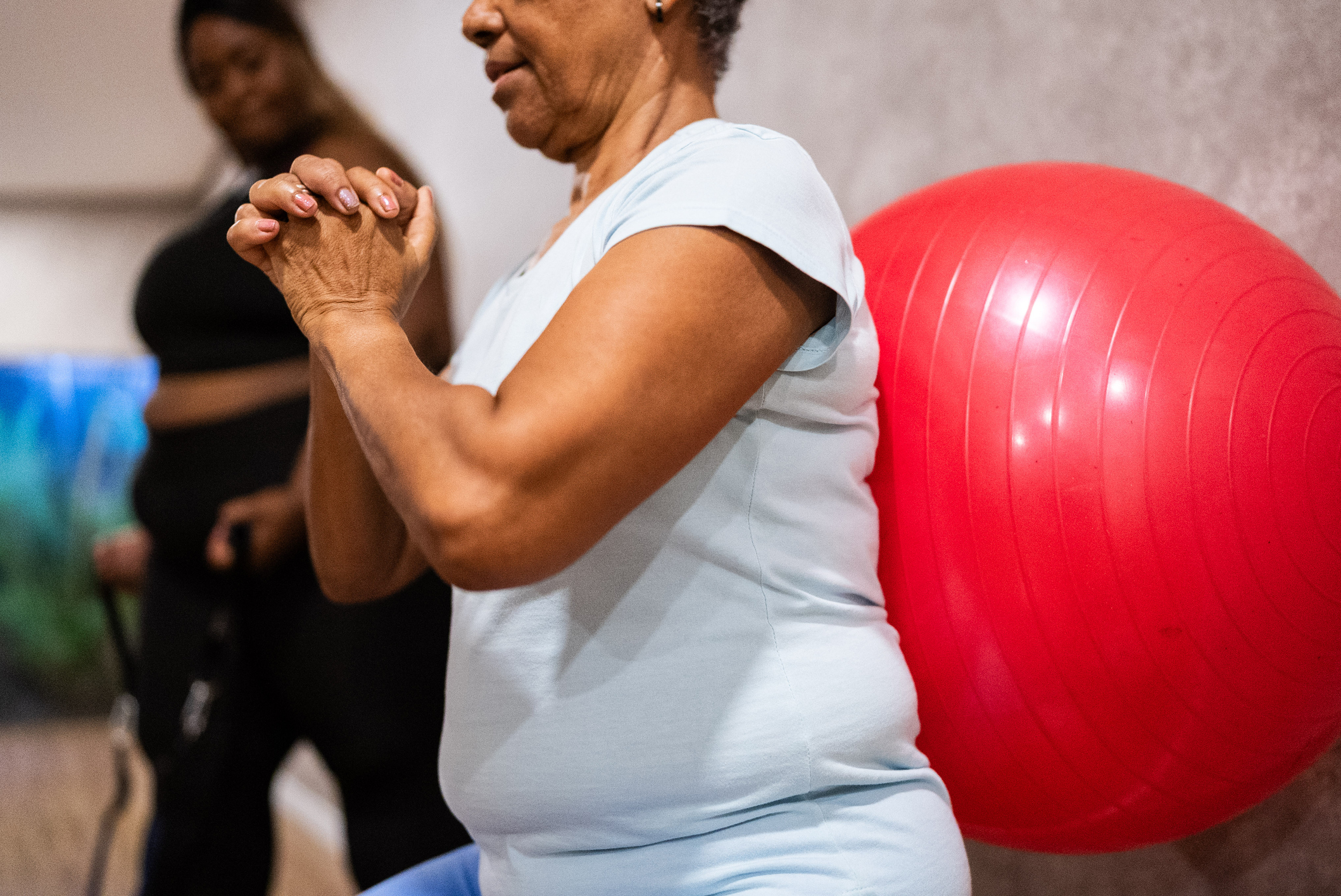Get Easy Health Digest™ in your inbox and don’t miss a thing when you subscribe today. Plus, get the free bonus report, Mother Nature’s Tips, Tricks and Remedies for Cholesterol, Blood Pressure & Blood Sugar as my way of saying welcome to the community!
Stability squats give you life-saving leg strength

Leg strength is important for balance and athletics. But did you know quadriceps strength could save your life? Studies show quad strength lowers your chance of death from any cause. [1]
Squats are one of the best ways to develop lower body strength. However, avoiding strain on the knees is vital, and having proper posture when squatting is the key to avoiding that strain. Using a stability (Swiss) ball for wall squats is a great way to get you started safely while improving leg strength to move on to unsupported squats.
In today’s video article, Alan Orr shows the pitfalls and proper methods of using the stability ball as an assisting tool for squats. Squatting with the stability ball is great if you suffer knee pain or low back issues, as it helps take the load off those areas.
Avoid poor posture
Often people develop strained knees because they don’t squat properly. They don’t squat past 90-degrees or they’re seated most of the day when keeps the knees at a 90-degree angle. Using the stability ball when squatting is a way to actually build your knee strength properly.
You want to avoid a posture where your knees are too far apart and your feet are too far forward. When you squat from this position, too much load (body weight) is placed on the knees. This happens because the knees, in this position, end at 90-degree angle.
Develop proper posture
First, make sure your feet point forward and your toes do not splay out or point in. What you want is for the feet to begin a bit closer to the body and then when you squat the knees will bend forward more. You don’t want too much forward bend, so if you find yourself leaning, simply raise your heels up off the ground to find better position without pressure on the knees. See the video for the details of this.
With proper posture and mechanics you are ready to begin doing the stability ball wall squats. Here, Alan shows three exercise variations to keep things fun and challenging.
Exercise 1 – Dynamic Wall Squats
Place the ball on the wall, stand with feet apart, resting your low back again the ball for support. Slowly bend your knees to lower your body into a squat, such that your knees bend slightly forward as described above and on the video. Then slowly and steadily press your feet into the ground to return to the standing position.
Repeat this using either reps (say, 4 sets of 12-15 squats) or for a time period (say, 30 seconds continuous squatting).
Exercise 2 – Isometric Wall Squats
You can also squat down and hold in the bent-knee position to develop tensile strength, or isometric strength in the lower body. You can do this at various heights to activate the muscle fibers in the legs at various positions.
Exercise 3 – Combined Exercise
Once you have a handle on the above two wall squat exercises, you can combine them. For example, you can do five dynamic squats, followed by holding an isometric squat for 20 seconds, then either rest and repeat, or continue to more dynamic and isometric squats.
Give these a try and see what can work best for you. Over time you will develop great leg strength and lower body stability. This may be enough for some, while others can then graduate to unsupported squats.
[1] Swallow, Elisabeth B., et al, “Quadriceps strength predicts mortality in patients with moderate to severe chronic obstructive pulmonary disease,” Thorax 2007;62:115-120












